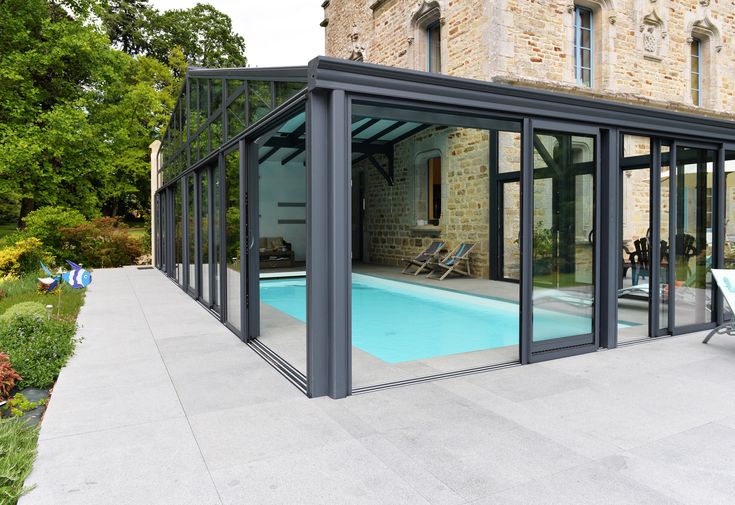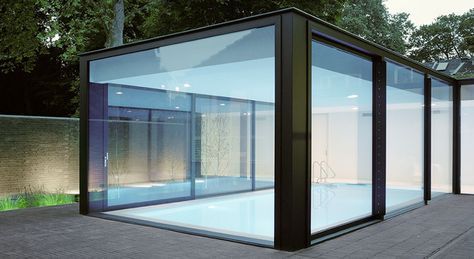
Introduction
When it comes to selecting the right enclosure for your pool, patio, or outdoor living space, two popular materials often come into the spotlight: polycarbonate and glass. Both offer unique benefits and aesthetic appeal, but they also have distinct differences that can significantly impact your choice. In this ultimate comparison guide, we’ll explore the pros and cons of each material to help you make an informed decision for your outdoor space.
1. Durability
Polycarbonate Enclosures:
- Impact Resistance: Polycarbonate is known for its exceptional impact resistance. It is significantly less likely to crack or shatter, making it a safer option in areas prone to severe weather or if accidental impacts occur.
- Weather Resistance: Polycarbonate can withstand various weather conditions, including high winds and hail. This durability ensures a long lifespan with minimal maintenance.
Glass Enclosures:
- Fragility: While glass can be durable, it is inherently more fragile than polycarbonate. Standard glass enclosures can crack or shatter upon impact.
- Tempered Glass Options: To enhance safety, many glass enclosures utilize tempered or laminated glass, which is designed to shatter into small, less harmful pieces. However, this adds to the overall cost.
2. Weight and Structural Support
- Lightweight: Polycarbonate is significantly lighter than glass, making it easier to install and requiring less structural support. This lightweight nature allows for greater design flexibility.
- Versatility: The ease of handling polycarbonate sheets allows for a variety of design options that might not be feasible with a heavier material.
Glass Enclosures:
- Heavier Material: Standard glass is considerably heavier, which means that your structure may require additional supports and reinforcements. This can complicate installation and increase labor costs.
3. Insulation and Energy Efficiency
Polycarbonate Enclosures:
- Superior Insulation: Polycarbonate provides excellent thermal insulation with its multi-wall construction, which can help retain heat during colder months. This can reduce energy costs if you use heating systems for your pool or outdoor space.
- UV Protection: Polycarbonate sheets often come with UV-filtering capabilities, protecting your skin and furnishings from harmful rays while allowing natural light to filter in.
Glass Enclosures:
- Limited Insulation: While glass can provide some insulation, it generally does not match the thermal performance of polycarbonate. This can lead to higher heating costs in cooler climates, as heat may escape more readily.
- Natural Light: Glass provides a clear view and allows abundant natural light to penetrate, which can create a bright atmosphere in your enclosure.
4. Aesthetic Appeal
Polycarbonate Enclosures:
- Modern Look: Polycarbonate enclosures provide a modern, sleek appearance that can blend well with various architectural styles. They’re often available in different tints and finishes for added customization.
- Frosted Options: Frosted polycarbonate sheets provide privacy while still allowing light to filter through, an option glass cannot offer without sacrificing visibility.
Glass Enclosures:
- Timeless Elegance: Glass enclosures are known for their classic look and can create a more upscale appearance. They provide unobstructed views and transparency, enhancing your outdoor landscape.
- Customization Limitations: While glass can be tinted or frosted, it does not offer the same variety of design options as polycarbonate.
5. Cost Considerations
Polycarbonate Enclosures:
- Affordability: Generally, polycarbonate enclosures are more budget-friendly than glass enclosures. They offer a cost-effective solution without sacrificing quality or performance.
- Long-Term Investment: The durability and lower maintenance costs associated with polycarbonate can offset the initial investment over time.
Glass Enclosures:
- Higher Initial Cost: Glass enclosures tend to be more expensive due to the material and installation costs associated with their weight and fragility.
- Maintenance Expenses: Regular maintenance and potential repairs can add to the overall expense in the long run.

Polycarbonate Pool Enclosure
Conclusion
Choosing between polycarbonate and glass enclosures ultimately comes down to your specific needs and preferences. If durability, insulation, and cost are your priorities, a polycarbonate enclosure may be the best option for you. Conversely, if you desire a classic aesthetic and are willing to invest more upfront, a glass enclosure may be the way to go.
Regardless of your choice, both materials offer unique benefits that can enhance your outdoor experience. Explore the options available at Excelite to find the perfect enclosure that fits your lifestyle and enhances your outdoor space!
